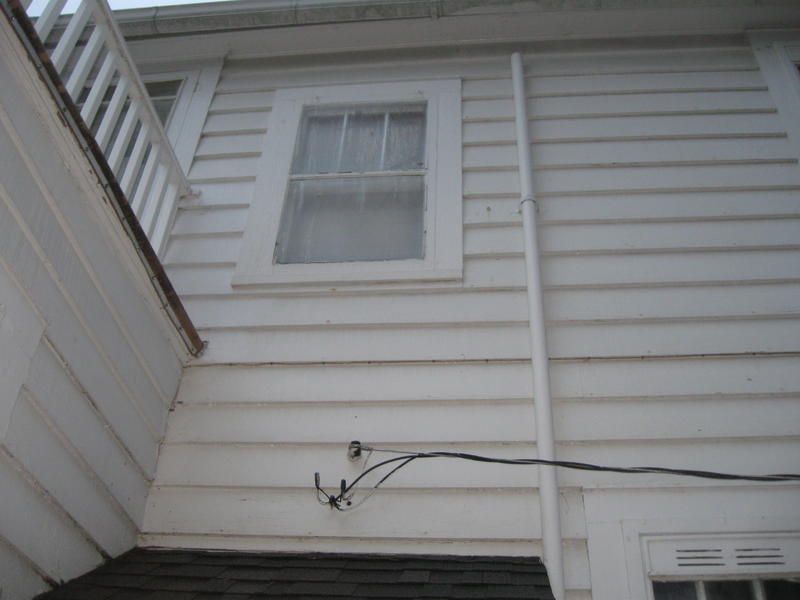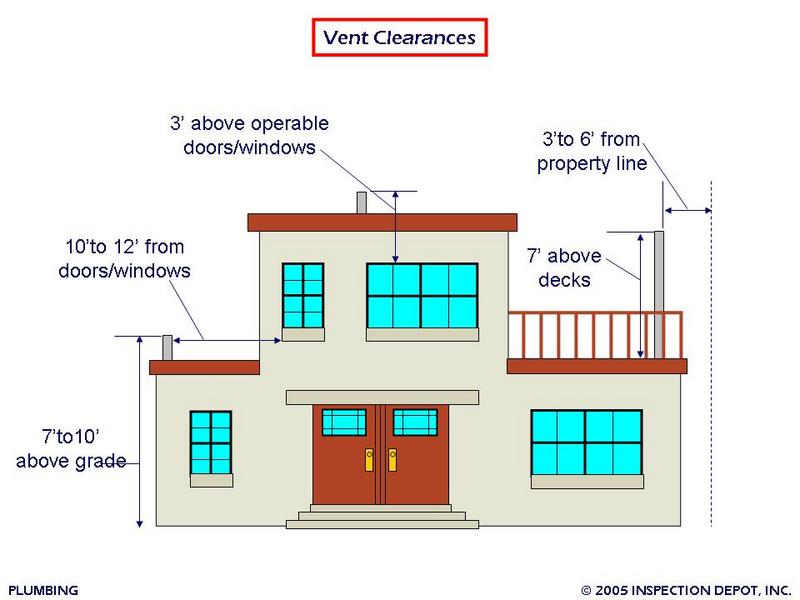How would you all report this condition (vent pipe)?
Are the SEC touching the vent pipe? Is the vent pipe a conductive material or is it plastic?
If the SEC is touching a metal vent pipe there is the possibility that it could rub and over time expose a conductor. I would recommend a protective sleeve be placed over the SEC like one they would use if it was touching a tree.
What is the opening that looks to be above a window?
Within 3 ft of window possible nasty odors?
IRC 2006 Vents, P3103.5 states:
- not less than 4 feet directly beneath any door, openable window, or other air intake opening
- nor within 10 feet horizontally of such an opening unless it is at least 2 feet above the top of such opening
Is the top of vent protected to prevent birds or rodents from entering?
Also, from looking at the pic, is the siding in contact with the roofing shingles?
Good luck !
The SEC cable isn’t touching. I was wondering about the vent pipe not terminating above the roof line. So my question is, other than unsightly, is there anything wrong with the vent terminating here, regardless of window?
Sidewall Vent?: IRC 3103.6 may not terminate under vented soffit; BUT the window is there, also looks like a french door on the deck. Does not look like vented soffit. IRC 3102.1 also says all main vents must terminate above roof; tricky. Other things like nothing to keep out birds and critters. Is it the main vent or some auxilliary thing? Tricky; good question. Huum.
Completely ignoring codes, one could make a recommendation simply to prevent unwanted odors/gases from entering the house.
Where it is is at best questionable. My take on it is (and code) it should be above the roof plane. Under the closed eve like that you can bet they will get odors in the window (depending on the direction of the wind).
If it’s original, looks like it is, probably steel pipe, I’d say something to the effect, accepted practice at the time of construction. Upgrade recommended.
Who cares if critters get into the sewer line? ![]() What about normal vent stacks? They don’t have screens.
What about normal vent stacks? They don’t have screens.
As far as the odor goes, that depends on whether those upper windows can still be opened. ![]()
John Kogel
www.allsafehome.ca
Thanks for the replies. The pipe is PVC & is close to the window, though higher. The thing that no one one mentioned is “frost closure”. This is also another reason why bigger pipe is usually used for the roof penetration (normally 3"). Now, I’ve never heard of this happening, but nonetheless, there’s the possibility. This is what I documented on the report:
Exterior vent pipe—
When a vent is added to a home, it is difficult to run a vent pipe up through the house and roof. Often, a vent is run out through the wall and up the outside of the building, as in this case at the back of home. This is acceptable although not attractive, and frost closure problems are more likely with this arrangement. The vent pipe should also extend at least six inches up through the roof of the house. In addition, the vent pipe shouldn’t be located close to an openable window, where potentially dangerous sewer gases, under certain conditions, could enter the living area.
Frost closure: Vents which are very long may be subject to frost closure in the winter. The warm moist air passes up through the vent, and the air is cooled as it contacts the cold walls of the outdoor section of the vent pipe. The moisture in the air condenses and freezes on the walls of the vent pipe. In a prolonged spell of cold weather, this frost can build up to a point where it closes off the top of the vent. This, of course, negates the effectiveness of the venting system. Vents should be at least three inches in diameter where they penetrate the roof system in order to avoid frost closure.
Recommendation: When at the house for other repair reasons have a licensed plumber evaluate and repair if needed.
[FONT=Verdana]If anyone has more feedback, please let me know. Thanks again!!![/FONT]

